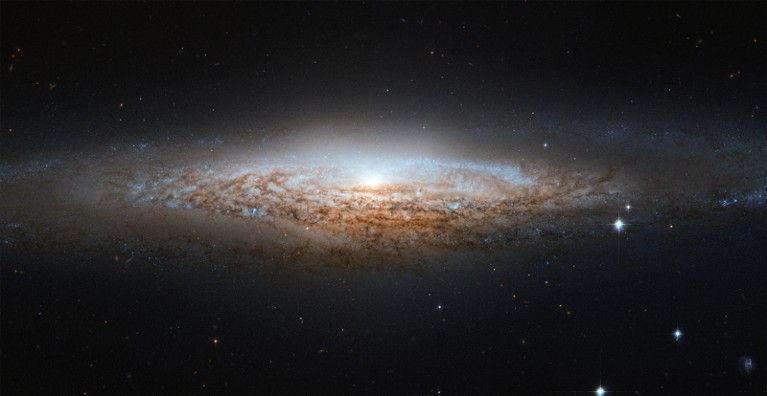
The universal constant Big G measures gravitational attraction, but physicists are struggling to pin it down.Credit: ESA/Hubble & NASA
Of the fundamental constants that rule the physical Universe, by far the most perplexing is ‘Big G’, which quantifies gravitational attraction. The highest and lowest results for G differ by a whopping 0.05%. That might not sound like much, but it’s a maddeningly loose fit for physicists in a world that now routinely measures other constants to ten or more decimal places.
The lack of mastery of G is a mystery. But results reported in Nature this week go some way to resolving it. The new measurements still don’t pin the constant down — in fact, the paper describes two tests from the same laboratory that show a slight statistical difference in their results — but they do offer a way to do so. Because the parallel experiments were performed in the same place, physicists have a chance to narrow down the possible explanations for the discrepancies. (Not only can the set-ups be compared directly, but scientists already know, for example, that the disparities cannot be down to geographical latitude, or to differences in air density.)
Gravity is the weakest of all known forces (think of how easily a tiny fridge magnet overcomes the downward pull of a planet-sized mass). And getting cash for experiments is tough, because few outside metrology lose sleep over G (most applications rely on relative, rather than absolute, values of gravitational forces). But as they continue to edge towards the truth, Big G researchers can take inspiration from elsewhere in metrology.
The values of some fundamental constants are now so well known that the General Conference on Weights and Measures, which oversees the International System of Units (the SI system), is going to use them in new definitions of the kilogram, ampere, kelvin and mole. The kilogram will no longer be equal to the mass of a physical lump of metal kept in a vault in Paris; instead, it will be defined in terms of Planck’s constant, which relates the energy of a wave to its frequency.
Narrowing down these SI constants, such that their uncertainty can now be considered zero, is a triumph of decades-long efforts by labs around the world. It’s heartening that such dogged determination continues in the pursuit of Big G. Solving one of the most enduring conundrums of the Universe might not change the world, but it could help us to understand how it works.

 Quantum method closes in on gravitational constant
Quantum method closes in on gravitational constant


